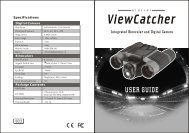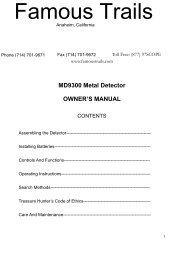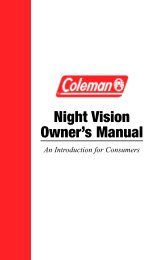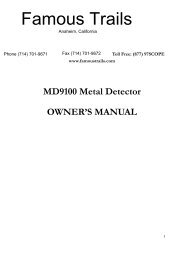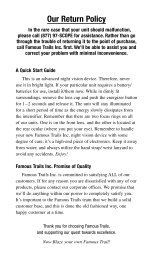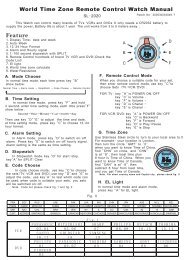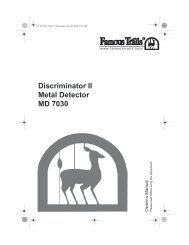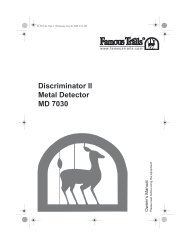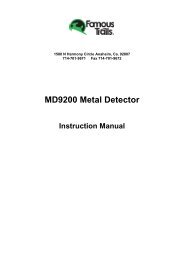MD3006 & MD7012 Instructional Sheet - Famous Trails
MD3006 & MD7012 Instructional Sheet - Famous Trails
MD3006 & MD7012 Instructional Sheet - Famous Trails
You also want an ePaper? Increase the reach of your titles
YUMPU automatically turns print PDFs into web optimized ePapers that Google loves.
5. Move a sample of the material you want to detector over the search disc. If you are using a coin, then make surethat the flat side is being used. It will give more of a signal.6. If you are experiencing any difficulties with the readings, tune the detector and try again.Non-ferrous Metals*All metals except for Iron and Steel are non-ferrous. This includes Stainless Steel. The way you can tell thedifference between the non-ferrous metals is by the reading that you get on the viewmeter (the yellow side).Ferrous Metals*There are only two ferrous metals on earth. They are Iron and Steel. Ferrous meaning “porous” or reacts to amagnetic field. Things that are commonly iron are magnets, sledge heads, and crowbars. The <strong>MD3006</strong> will detect aferrous metal and register that signal on the ferrous side (red side of the viewmeter), but there are no tones associatedwith that side of the viewmeter.How a metal detector worksA metal detector is never 100% accurate. But, with the right adjustments, it can be correct most of the time.Here is how that is…A metal detector search coil (the search disc) emits a frequency. This coil also receives the frequency backfrom objects under the ground. This is how it knows something is there.A metal detector search coil also reacts to magnetic fields. The same way two magnets attract each other.Magnetic fields in the area that you are searching can cause the detector to go crazy sometimes.So “tuning” a metal detector adjusts the frequency finding ability of the metal detector. Setting the “ground” ona metal detector minimizes magnetic fields that the detector will register, and disregards naturally occurring minerals inthe dirt that would cause the detector to produce false readings.*Note: The best frequency to operate in is TR1. This is a medium level setting and gives the best all-around readings.VLF is used mainly to set up the unit. However, the unit will operate properly in VLF. TR2 allows for a moredetailed look at what type of objects may be in the ground.*Note: The first rule in the Treasure Hunter’s Code is “Dig for everything”. You never know what you may find.Happy hunting.



